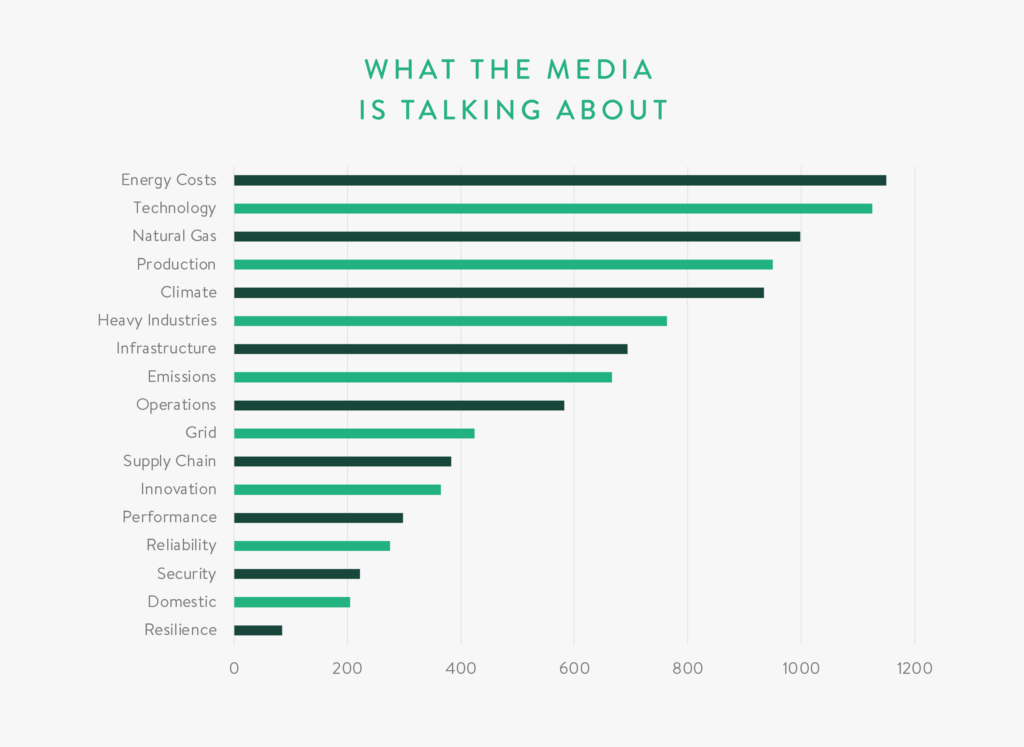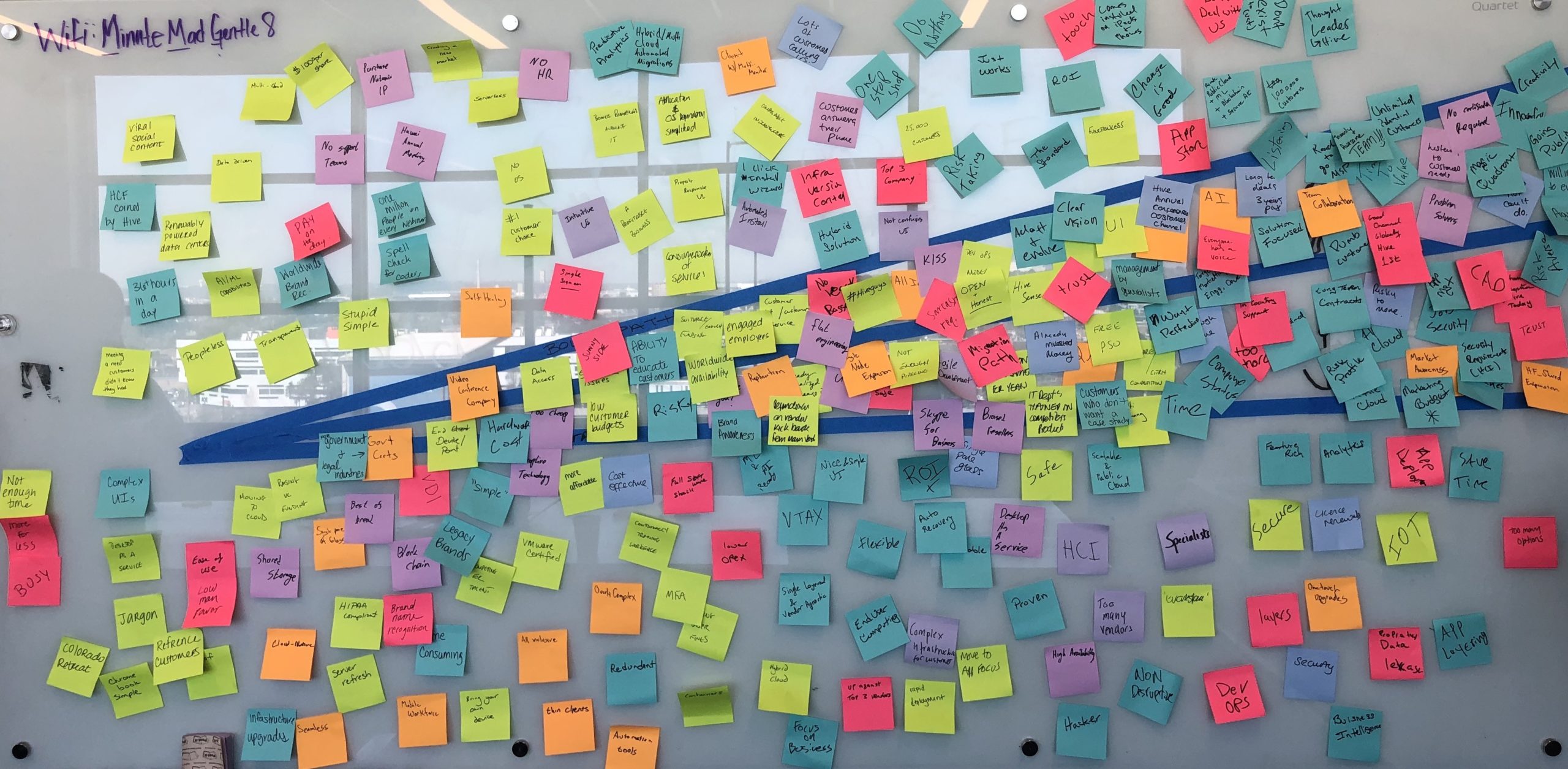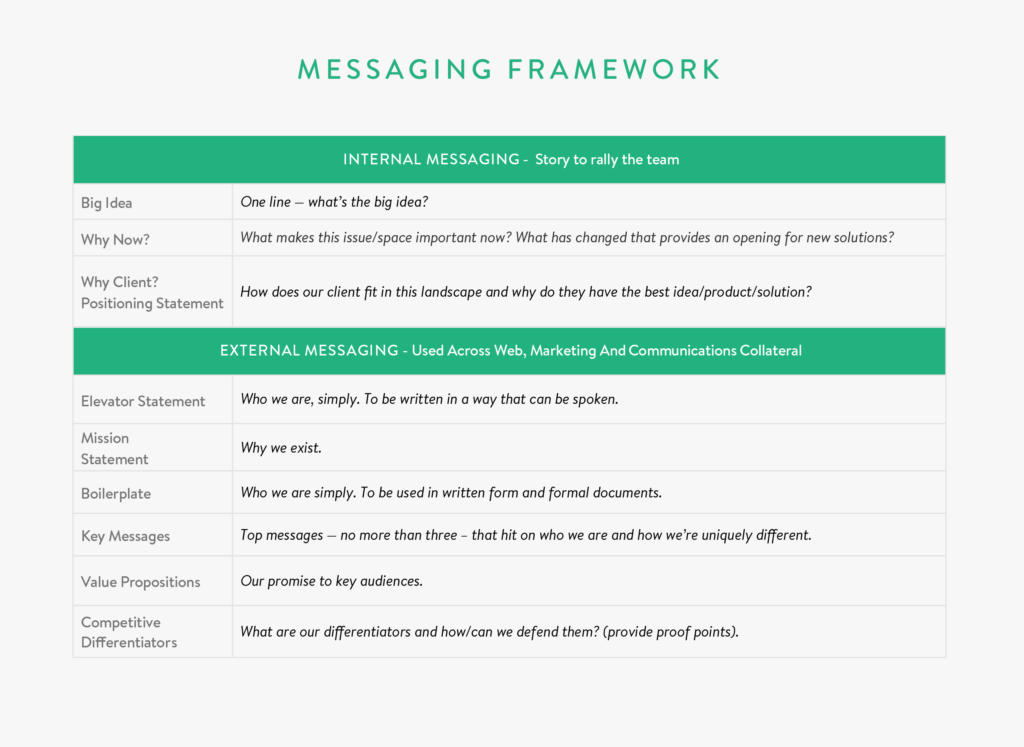The energy transition is in full swing, and nearly every energy company faces a common challenge: communicating their unique place in a massive and complex transformation. Through the long haul of the energy transition, brand messaging is one of your best tools to stand out in an industry that all too often looks and sounds the same.
Your messaging can’t remain static for years — this transition is a long and winding road. You also don’t have the luxury of putting everything on hold to develop a net-new brand framework. Instead, frequently revisiting elements of your story and key messaging will keep you in front of customer needs and market competition while staying on course with your larger brand narrative.
Let’s dive into what makes effective energy brand messaging for the energy transition and how you can keep it fresh without throwing out your core platform whenever a new technology, policy, or internal priority arises.
Flexible and Resilient: Brand messaging
for the long (energy transition) haul
The energy industry is in a state of constant change. Companies regularly review and rework business strategies and priorities to take advantage of market opportunities — especially as the speed of capital increases. And energy companies have the added challenge of communicating their place in a transformation that is receiving increased attention from the media, legislators, and the general public.
So, what does this mean for communications teams tasked with speaking to these changes and trends? As the waves of energy progress ebb and flow, how do you communicate the small but essential steps forward without getting off track? A flexible and resilient messaging platform is your golden ticket: Durable enough to weather the energy transition but adaptable to new market forces and larger industry narratives.
For resilient messaging, focus on your brand’s foundation: Your brand promise, brand pillars, mission, vision, and values. These should remain consistent. A solid core for your platform enables you to be nimble in other elements of your messaging, like value propositions, differentiators, key messages, and proof points.
For example, consider the graph below, which shows what media is discussing now in the energy industry. We know these topics will change regularly. But with flexible and resilient messaging, you are ready to plug into the larger conversations around energy costs or heavy industry in a way that supports your defined brand promise and vision for the energy transition and truly differentiates your brand.

Though the energy transition is decades in the making, even minor technological breakthroughs can expand or change an organization’s market footprint. To ensure those advancements resonate with your audiences in a meaningful and interesting way, continuously evaluate the impact on your brand and its opportunity to own a message.
Steps to refresh your messaging and differentiate your energy brand
Great brands are not built in a day, especially those agile enough to navigate the ever-changing waters of the energy industry. By taking these steps, you can kick off a brand strategy process that will help differentiate your company in the hearts and minds of your target audiences.
1) Take an honest look at your messaging platform
Before you refresh brand messaging or begin a new brand strategy project, it’s helpful to account for what you already have. Suppose your existing platform has some elements that still ring true (it likely will), but other aspects are outdated or ineffective; narrow in on those parts for your refresh. If you can’t point to clear documentation, it’s a sign to move on to step two and begin the messaging process.
2) Conduct messaging research
When was the last time you looked closely at your competitors’ messaging? Market research, like competitive analyses, media and messaging audits, and industry reports, will identify messaging gaps your brand can fill. And audience research, like buyer personas and customer interviews, helps uncover your audiences’ greatest needs and challenges. Even if you’re not ready to invest in a full-blown research project to support your brand messaging, much of the daily work you and your team do to keep a pulse on the energy space can translate into insights for messaging. Learn more on how to glean that insight in the next step.
3) Get people talking via stakeholder interviews and messaging workshops
After assessing your brand position through initial research, tap into your internal experts — sales, marketing, policy, product management, customer success, and the C-suite — with interviews and a messaging workshop. The interviews will give you in-depth reflections and expertise, while the workshop helps to align stakeholders within your company on your brand’s vision, challenges, and opportunities. A messaging workshop should encourage bold thinking, create a space for equal participation, and dig into audience goals, needs, and personalities.

At INK, we use the Think Wrong methodology to facilitate messaging workshops for our clients because it’s based on design thinking principles and helps groups of people discover new possibilities in a collaborative setting. Plus, it’s an efficient way to get everyone’s insight on a challenge simultaneously .
4) Develop a messaging framework to use across channels
When combined, your research, interviews and workshop takeaways lays the foundation for a robust brand messaging framework. This messaging sets up your team to grow brand awareness and execute an integrated communications program while also serving as a guide for everyone across the company on writing and speaking about the brand.

We’ve found it effective to begin in a word document as you navigate the drafting and review process, then finalize your framework in a designed presentation or online style library that can be easily shared and presented.
5) Revisit and revise
Once you go through this process in full, each time you come back to your messaging platform, it’ll be easier to do a quick refresh based on the latest business priorities, customer insights, and market shifts.
Your energy brand messaging partner
The energy story, and the story of the energy transition, will continue to evolve. Energy communicators with the foundational tools necessary to tell their company’s story will have a better chance of breaking through the noise in a way that resonates over the long haul. But no team should go it alone. An energy communications agency with industry experience can give you a third-party perspective to differentiate your energy messaging, identify the right narratives to own, and launch multichannel campaigns that show your brand’s unique value proposition.
A clear, unified brand can be your biggest competitive advantage — especially as we move forward into this new phase of the energy transition. Laying the foundation to grow brand awareness and build an impactful integrated communications program allows you to jump on trends, build trust, and resonate with audiences throughout the energy transition.



